Our Spanish language program coordinator, Prof. Juan Carlos Rocha Osornio, along with two PhD students from our department, Daniela Maldonado and Eduardo Villalobos-Graillet, have completed an exciting open access textbook project titled A parar bien la oreja: Cuaderno de comprensión auditiva (Pressbook, 2020).
This Open Educational Resource (OER) focuses on listening comprehension for intermediate and advanced students of Spanish. “Listening is notoriously difficult for learners of a new language in general” – said Prof. Rocha Osornio, when explaining the motivation behind this project – “and students of Spanish whose first language has a different sound system as Romance languages have to make an extra effort to acquire these sounds”. In his opinion, most of the Spanish textbooks in the market lack proper tools to help our students develop listening skills. Therefore, he enlisted Maldonado and Villalobos-Graillet to collaborate in the creation of this resource.
Encouraged by eCampus Ontario’s provincial strategy to “lead through open and collaborative practices” and looking to contribute to the growing activity in support of Open Educational Resources across the province, the team decided to create A parar bien la oreja as an open access textbook. The project began in Summer 2019 thanks to a University of Toronto Libraries OER Adaptation Grant and was later supported by the Faculty of Arts & Science as well.
Using selections from an oral literature archive housed at Universidad de Jaén (in Spain), A parar bien la oreja gives students the opportunity to listen to Spanish native speakers share superstitions, legends, customs, recipes and even childhood songs popular in the Hispanic world. Eduardo Villalobos-Graillet mentioned that the team is proud to present to students in our Department, as well as those from other educational institutions in the world, “the traditions that are an indelible part of the Hispanic worldview and that have not been previously included in textbooks of Spanish”. He pointed out that the collection of audiovisual recordings in A parar bien la oreja span from 1970 to the present. “These clips have been selected to make it easier for our students to practice grammatical aspects, learn vocabulary, become familiar with the linguistic variations of seven countries and, consequently, develop their intercultural skills and attitudes.”
Daniela Maldonado highlights some of the features that make this OER different from other textbooks and other open access resources:
“In most Spanish as a Foreign Language textbooks, the audiovisual material is written with a chapter’s vocabulary and specific grammar content in mind. In the videos included, the actors speak slowly so that students can listen and understand better. Moreover, oftentimes videos present characters whose interactions and personalities are fabricated to fit an overall narrative arch in the textbook. These constrained exposures can stifle students’ listening comprehension outside the Spanish classroom. In contrast, the fourteen chapters of A parar bien la oreja include candid interviews with real Spanish native speakers telling stories full of humour and wit, peppered with dialectal expressions, and told with real passion for the topic. Students listen to the tale of a haunted hamburger in Honduras, the story of vengeful cats in Puerto Rico or learn how to make chocolate cake as they do in southern Spain and are as impacted by the content as they are by the people who tell these stories”.
A parar bien la oreja was first piloted in our second- and third-level language courses during the 2020-21 academic year – reaching about 300 students. The reception has been very positive: many students have commented how the protagonists of the segments remind them of their own family members and how they have found similarities between the stories told in the clips with elements from their own heritage. Daniela Maldonado shared her experience teaching content from this open educational resource as an instructor for SPA320Y: “Thanks to the conversations initiated by the book, students learned about the Hispanic world and felt encouraged to discuss the traditions, recipes, superstitions, and legends of their own cultures. We reflected on how humor is understood in different cultures. We paid special attention to how the interviewees spoke and talked about how to tell a story in a pleasant way. I noticed the students were very interested in the stories, I heard their laughs and I appreciated how they identified with the Hispanic world and the material.”
Louis-Eric Mongrain, a student in SPA320Y who was part of the pilot, had this to say about A parar bien la oreja: “Por sorprendente que parezca, este libro no es el manual típico que has utilizado en previos cursos, sino que es un libro de nueva generación que optimiza la experiencia de aprender español. Cada capítulo aborda temas de la cultura hispana con varias actividades para mejorar todas las competencias lingüísticas. En lugar de tener un narrador, el libro ofrece entrevistas con la gente local que cuenta las costumbres específicas de su cultura. A menudo, descubrí que tenemos mucho en común los canadienses, por ejemplo, con los juegos infantiles. Otras veces, aprendí sobre actividades de las que no había escuchado nunca en mi vida, como el palo encebado.” (“As surprising as it may seem, this book is not the typical manual that you have used in previous courses, but it is part of a new generation of textbooks that optimizes the experience of learning Spanish. Each chapter addresses issues of Hispanic culture with various activities to improve all language skills. Rather than having a narrator, the book offers interviews with local people who tell the specific customs of their culture. Often, I discovered that Canadians have a lot in common, for example, similar children's games. Other times, I learned about activities that I had never heard of in my life, such as the palo encebado - greasy pole.”)
As an open access resource, A parar bien la oreja: Cuaderno de comprensión auditiva is available without cost to anyone interested in developing listening comprehension skills in Spanish. You can find it through eCampus Ontario Pressbooks site.


